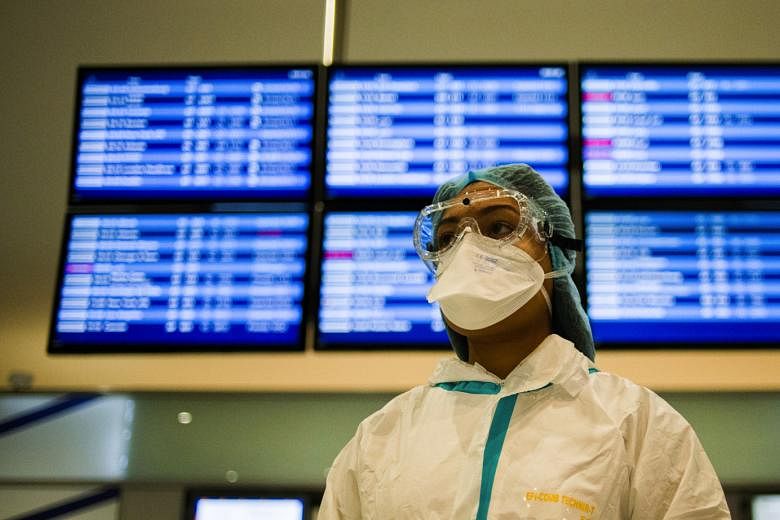European Union member states are scheduled to agree this week on a joint approach to their border controls during the pandemic, in a last-ditch effort to avoid the re-imposition of border closures as coronavirus infections rise steeply across the continent.
Under proposals discussed over the weekend between envoys from the EU's 27 member states, European governments are inching towards an agreement to base their decisions on whether they keep their borders open on a colour-coded "traffic light" classification guidance provided by the European Centre for Disease Prevention and Control.
If the proposal is formally adopted in the next few days, residents from European regions marked as green should be able to cross EU borders unhindered, while those living in areas marked orange or red where infection rates are higher will face a variety of restrictions, ranging from the requirement to produce a negative Covid-19 certification, to even a total travel ban.
But far from keeping Europe's borders open, the measures are only likely to increase the confusion about managing the continent's frontiers.
For Europe's infection rates have soared so much that the residents of only some parts of Germany and a few small countries on the continent's northern and southern edges would qualify for unrestricted movement under the current proposals.
Furthermore, there is no continent-wide consensus on how to handle travellers from risk zones.
All European governments are reeling from the mistakes they committed when they first opened their borders after the first bout of the pandemic.
As a result, official disarray about European border controls is so widespread that Finland has already imposed a fresh ban on all non-essential travel and closed its frontiers, notwithstanding efforts to reach a Europe-wide agreement.
The elimination of border controls is considered one of the EU's biggest achievements.
Opinion polls consistently show that this right to move freely from one country to another and to reside and work in any EU member state without seeking anyone's approval is one of the most popular of all EU measures.
Nonetheless, EU treaties allow member states to impose emergency border controls in extreme circumstances such as a health emergency, and these were the powers used by all European governments to seal their frontiers as the coronavirus pandemic struck earlier in the year.
The continent's tourism industry, which together with associated services accounts for up to 10 per cent of the EU's gross domestic product, was almost wiped out because of these closures.
Matters were particularly dire in the southern EU member states on the shores of the Mediterranean Sea, whose economies are both more vulnerable and highly dependent on tourism.
So as the first wave of the pandemic seemed to have subsided by June, the pressure was on to lift border restrictions. Tourism operators and governments vied with one another in showcasing their safety measures, such as socially distanced beach sundecks.
The tactic worked up to a point: Tourism revived during the summer months of July and August in Europe. But it soon became obvious that young people especially were flouting safety measures, particularly in the nightclubs and drinking bars, so much a feature of Europe's holiday resorts.
One after another, Europe's top tourist spots became infection hot spots: First it was France and Spain, then came Portugal and smaller European countries such as Croatia.
Currently, more than 100,000 new cases are reported daily on the continent, and in some countries the infection rates are back to levels last seen in March.
Mortality statistics remain much lower, but fears that infections brought back by youngsters on holidays will eventually hit people in more vulnerable age groups have prompted the re-imposition of border controls.
Hungary took the lead in shutting its borders early last month, and its model is now followed by other countries.
A specially constituted task force of the European Parliament is calling upon governments and the European Commission, the EU's executive body, to harmonise border control regulations in order to save the tourism industry from another shutdown.
"We insist on urgent concrete action from the European Commission and the member states. A well-defined crisis management mechanism is needed; the sector is fighting to survive," claimed the letter by the Members of Parliament.
In theory, the proposals which look likely to be adopted this week meet this appeal: Restrictions on border crossing will be limited to infected European regions rather than whole EU states, so the principle of free movement across the continent will be upheld, even if some borders will be shut.
In practice, however, the whole system will depend on how honest individual travellers are in declaring whether they have been to seriously infected areas. And Europe's internal borders are, in any case, too porous to be policed in this partial manner.
Two conclusions are, however, clear: Europe's initial attempt to open borders has ended in failure and governments are not too keen to experiment again.

